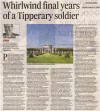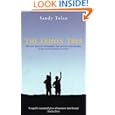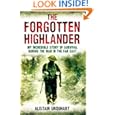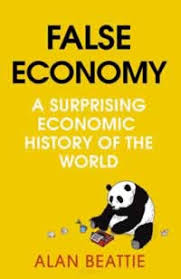|
|
| Blog |
 |
| Archive |
|
|
|
|
| Blog |
| To find an archived article, simply click on Index and scroll the subject titles, or do a Ctrl-F search |
|
|
| Blog |
 |
| Archive |
|
|
|
|
| Blog |
| To find an archived article, simply click on Index and scroll the subject titles, or do a Ctrl-F search |
Opinion & Analysis |
Monday, August 24, 2009 |
Whirlwind final years of a Tipperary soldier
The grave of a relative lost to war in Burma is testimony to a sacrifice made for us, writes TONY ALLWRIGHT PHILIP FRANCIS Brennan was born in 1916 in tiny Kilsheelan in south Tipperary, one of six children of his mother Ethel. Her husband, also Philip, had another three teenage daughters by his deceased first wife. With a small farm and some merchant interests, Philip père supported his large brood to a reasonable standard until disaster struck. He succumbed to the Spanish flu carnage which swept the world in 1918/19. Ethel was widowed with six children under eight plus three step-daughters, but little in the way of assets or income. Life became immeasurably harder and Ethel herself expired still a youthful woman in 1930 of, essentially, exhaustion. Her children were all teenagers. After his father died, little Phil had been sent to live much of the time with his aunt Rachel in England, where he spent many formative years. So as a young adult in England he became an apprentice brewer with the (still existing) Shepherd Neame Brewery. These were the peaceful mid-1930s and before long he joined the volunteer reservists of the British territorial army. Many young guys did likewise because, simply, it was good fun. You did some marching, went on camping trips, got to shoot guns, enjoyed great camaraderie drinking beer together and chasing girls, and even got paid a little money. What’s not to like? However as a reservist Phil discovered in 1939 that when war breaks out you can quickly find yourself in combat zones, because you are already a trained volunteer soldier. That’s how Phil found himself as a Second Lieutenant gunner with the Royal Artillery in France in 1940, as part of the British expeditionary force sent to keep the Nazis at bay. It ended in calamity with the BEF chased ignominiously back to the Dunkirk beaches. Phil was among the 340,000 soldiers rescued by the plucky armada sailing from Dover. But his travels, travails and war were just beginning. He was just one of 70,000 southern Irish who joined the British military to fight the rising fascism, imperialism and global aspirations of Germany and Japan. With Ireland staying out, some signed up from altruism, others for adventure, some were conscripted while many, like Phil, were yoked in by accident. All were honourable and courageous young people who for the decades that followed should have been revered not disdained by their home country. Within two months of Dunkirk, Phil sailed to India, seconded to the 23rd Mountain Battery within 25 Mountain Regiment. This formed part of the Royal Indian Artillery, a unit to which he remained attached for the remainder of his service. An avid equestrian, he was delighted to take responsibility for the battery’s horses and mules. My nonagenarian father remembers him as a handsome, jovial, chatty fellow with a great turn of phrase. This is evident in his letter to a sister shortly after his arrival. Though he doesn’t say much about the fighting, he laments he has never ridden an elephant or killed a tiger. However, there are lots of wild animals right there inside his tent doing a highland fling round his hurricane lamp – beetles, grasshoppers, assorted bugs. He was then transferred to Burma but by late 1941 was back westward again, in Quetta in today’s Pakistan, and thence to the Waziristan town of Razmak, better known, as his letters home reveal, as “the hole of the Empire”. I doubt if contemporary soldiers fighting today’s Taliban and al-Qaeda would much dispute such an epithet. Phil writes to his aunt Rachel that Ramzak is but a cantonment completely surrounded by barbed wire and “no woman has ever been let within 40 miles of it”. He observes that the local Pathan (the Pashtun people of Afghanistan and the northwest of modern Pakistan) “has a great sporting instinct and considers careless British officers fair game”. One such local, “Buckshee Bill” with his “prehistoric” rifle, gains notoriety when he “shoots up six columns all on his own and then comes and sits on a hill slap outside the wire, taking further pot shots at officers, just for fun”. But he melts into nothingness whenever soldiers are sent to stop him. Being Irish, Phil admires these men “because they’re all agin the government” and wishes he could recruit such able fighters. While bemoaning the lack of real fighting, he’s suddenly whisked back to Burma, as adjutant to his regiment as a major. As no one knows where the invaders will appear, he travels all over the country, which reminds him of Ireland, except for the bamboo and banana plants and “funny looking houses on stilts”. But the fun stops when the army moves south to meet the Japanese invaders and some mighty battles ensue with plenty of casualties, though unfortunately the censors don’t allow Phil to relate details. In his last letter, in June 1942, he is relieved to have survived what he called “Round One” unlike many of his pals. Further clashes with the Japanese follow over the next five months but details are sketchy. On November 23rd, 1943, while engaged in guerrilla operations behind Japanese lines in the Arakan region in the northwest of the country, he sets off early on his horse to spy on Japanese positions with a colleague, Anthony Irwin. This requires crossing the Kalapazin river which is deep and flowing deceptively fast. A strong swimmer, he rides his horse into the water but they quickly get into difficulty. He sends his horse back and Irwin swims out to help him but Phil, weighed down with his trousers, boots, pistols and explosives, sinks from the grasp of his friend. Phil’s last, dying look is one of sadness rather than fear. Today Phil, who was my uncle, lies in the majestic Taukkyan War Graves Cemetery, 35km north of Rangoon in Burma. He is but one of the cemetery’s 6,465 fallen warriors who heroically gave their vibrant lives for an honourable cause, each with his own story. They came from Ireland, from all parts of Britain, from the Indian subcontinent, from west Africa; Christians, Jews, Hindus, Muslims; of every rank from high to low; each grave adorned with the same simple gravestone; all equal in death. The majority of them were, like Phil, in their 20s, but one was only 16. Another monument names 1,074 fallen Indian soldiers who were cremated as their faiths required. Twenty-eight monumental pillars are inscribed with the names of a further 27,000 men and women whose bodies were never recovered – hailing from Burma, India, Nepal, Africa and numerous other parts, many of them slave-labour victims of the brutal Japanese project to build a railway line to bring military supplies from Bangkok to Rangoon. And Taukkyan is just one of three such cemeteries in Burma, which was itself just one small corner of a vicious global conflict. We in the free world truly owe an extraordinary debt to these brave young people who fought and died so valiantly to preserve it for us. We can repay it only by doing whatever we can to continue to safeguard human freedom. Sadly, Burma itself is one country where it has been extinguished by its totalitarian junta. ___________________ Tony Allwright is an engineering and industrial safety consultant, and blogs on international and national issues at tallrite.com/blog © 2009 The Irish Times |
|
|
More on this subject in a blog post entitled “Tale of a Fallen Irish Warrior” |
|
|
|
|
|
Gift Idea |
||||||||||||||||||||||||||||||||||||||||||||||

Good to report that as at
FREED AT LAST, |
||||||||||||||||||||||||||||||||||||||||||||||
|
BLOGROLL
Atlantic Blog (defunct) Blog-Irish (defunct)
Jihad
Religion
Iona Institute
Leisure
Blog Directory
My Columns in the
|
||||||||||||||||||||||||||||||||||||||||||||||
|
What I've recently
But it's not
entirely honest in its subtle pro-Palestinian bias, and therefore needs
to be read in conjunction with an antidote, such as See detailed review +++++
BP's ambitious CEO John Browne expanded it through adventurous acquisitions, aggressive offshore exploration, and relentless cost-reduction that trumped everything else, even safety and long-term technical sustainability. Thus mistakes accumulated, leading to terrifying and deadly accidents in refineries, pipelines and offshore operations, and business disaster in Russia. The Macondo blowout was but an inevitable outcome of a BP culture that had become poisonous and incompetent. However the book is gravely compromised by a litany of over 40 technical and stupid errors that display the author's ignorance and carelessness. It would be better to wait for the second (properly edited) edition before buying. As for BP, only a wholesale rebuilding of a new, professional, ethical culture will prevent further such tragedies and the eventual destruction of a once mighty corporation with a long and generally honourable history. Note: I wrote
my own reports on Macondo +++++ A horrific account of:
More details on my blog here. +++++
After recounting a childhood of convention and simple pleasures in working-class Aberdeen, Mr Urquhart is conscripted within days of Chamberlain declaring war on Germany in 1939. From then until the Japanese are deservedly nuked into surrendering six years later, Mr Urquhart’s tale is one of first discomfort but then following the fall of Singapore of ever-increasing, unmitigated horror. After a wretched journey Eastward, he finds himself part of Singapore’s big but useless garrison. Taken prisoner when Singapore falls in 1941, he is, successively,
Chronically ill, distraught and traumatised on return to Aberdeen yet disdained by the British Army, he slowly reconstructs a life. Only in his late 80s is he able finally to recount his dreadful experiences in this unputdownable book. There are very few first-person eye-witness accounts of the the horrors of Japanese brutality during WW2. As such this book is an invaluable historical document. +++++
This is a rattling good tale of the web of corruption within which the American president and his cronies operate. It's written by blogger Michele Malkin who, because she's both a woman and half-Asian, is curiously immune to the charges of racism and sexism this book would provoke if written by a typical Republican WASP. With 75 page of notes to back up - in best blogger tradition - every shocking and in most cases money-grubbing allegation, she excoriates one Obama crony after another, starting with the incumbent himself and his equally tricky wife. Joe Biden, Rahm Emmanuel, Valerie Jarett, Tim Geithner, Lawrence Summers, Steven Rattner, both Clintons, Chris Dodd: they all star as crooks in this venomous but credible book. ACORN, Mr Obama's favourite community organising outfit, is also exposed for the crooked vote-rigging machine it is. +++++
It is really just a collation of amusing little tales about surprising human (and occasionally animal) behaviour and situations. For example:
The book has no real message other than don't be surprised how humans sometimes behave and try to look for simple rather than complex solutions. And with a final anecdote (monkeys, cash and sex), the book suddenly just stops dead in its tracks. Weird. ++++++
It's chapters are organised around provocative questions such as
It's central thesis is that economic development continues to be impeded in different countries for different historical reasons, even when the original rationale for those impediments no longer obtains. For instance:
The author writes in a very chatty, light-hearted matter which makes the book easy to digest. However it would benefit from a few charts to illustrate some of the many quantitative points put forward, as well as sub-chaptering every few pages to provide natural break-points for the reader. +++++
The author was a member of Britain's V Force, a forerunner of the SAS. Its remit was to harass Japanese lines of command, patrol their occupied territory, carryout sabotage and provide intelligence, with the overall objective of keeping the enemy out of India. Irwin is admirably yet brutally frank, in his descriptions of deathly battles with the Japs, his execution of a prisoner, dodging falling bags of rice dropped by the RAF, or collapsing in floods of tears through accumulated stress, fear and loneliness. He also provides some fascinating insights into the mentality of Japanese soldiery and why it failed against the flexibility and devolved authority of the British. The book amounts to a very human and exhilarating tale. Oh, and Irwin describes the death in 1943 of his colleague my uncle, Major PF Brennan. +++++ Other books here |
||||||||||||||||||||||||||||||||||||||||||||||
|
|
||||||||||||||||||||||||||||||||||||||||||||||
|
After
48
crackling, compelling, captivating games, the new World Champions are,
deservedly,
England get the Silver,
No-one can argue with
Over the competition, |
||||||||||||||||||||||||||||||||||||||||||||||
|
|
||||||||||||||||||||||||||||||||||||||||||||||














